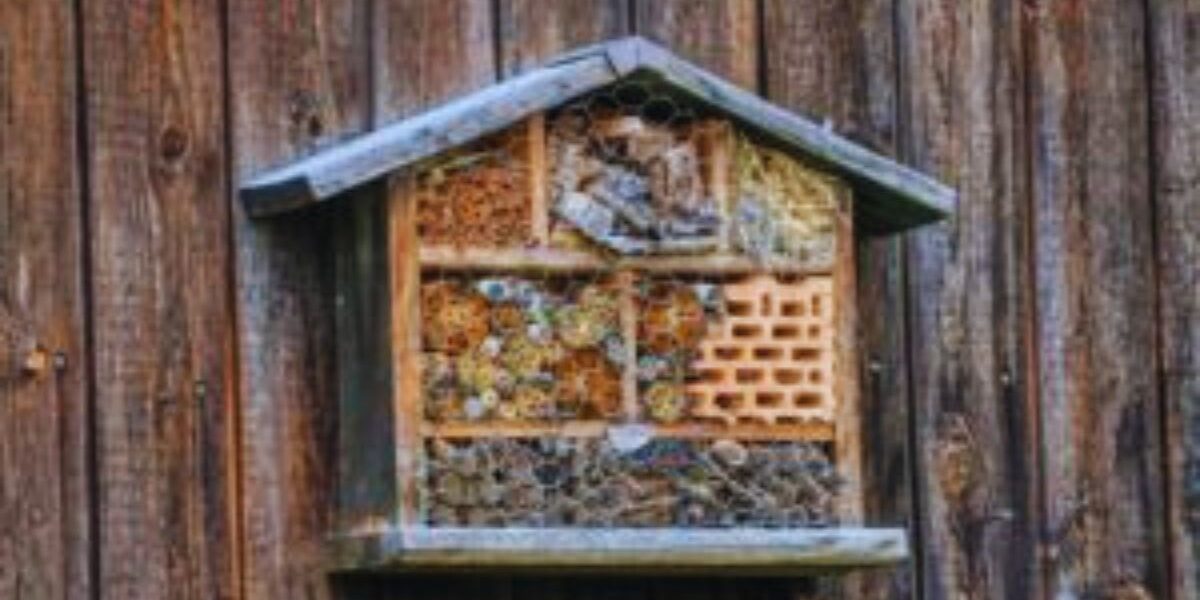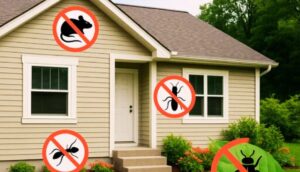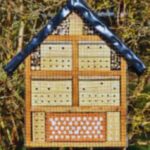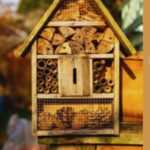Build a Cozy DIY Bug Hotel for Pollinators: A Fun Garden Project That Helps Nature Thrive

Pollinators are the unsung heroes of every garden. Without them, your flowers wouldn’t bloom as brightly, and your vegetables might not even grow. Sadly, because of development green spaces are being destroyed and therefore many pollinators are losing their natural habitat or homes. That’s where a DIY bug hotel for pollinators comes in.
A bug hotel is more than just a fun weekend project. It’s a sanctuary for bees, ladybugs, lacewings, and other beneficial insects. And the best part is? You can become a part of the solution by using materials you probably already have.
In this guide, you’ll learn why bug hotels matter, how to build one step-by-step, and how to keep it buzzing with life. We’ll also answer common questions and give you ideas to make your bug hotel both useful and beautiful.
Why Build a DIY Bug Hotel for Pollinators?
Pollinators face challenges every day. Habitat loss, pesticides, and climate change have all taken a toll. By building a bug hotel, you provide them with a safe, sheltered space to rest and nest.
Bug hotels help:
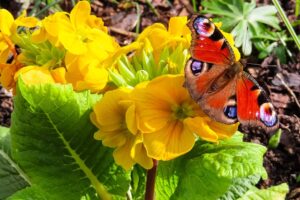
-
Bees find nesting spots.
-
Ladybugs stay protected while they eat pests.
-
Butterflies and moths rest between flights.
-
Lacewings lay eggs where their larvae can hunt garden pests.
It’s not just good for the bugs. A healthy pollinator population means your plants thrive naturally, without relying heavily on chemical fertilizers or pesticides.
Choosing the Right Location
Location is everything when it comes to attracting pollinators.
Here’s what to look for:

-
Sunny but sheltered: Many insects love warmth but don’t want constant wind.
-
Dry spot: A bug hotel should never sit directly on wet soil.
-
Close to flowers: If you have pollinator-friendly plants nearby, your guests will find food easily.
-
Safe from predators: Keep it away from heavy foot traffic and areas where birds might easily raid it.
Materials You Can Use
You don’t need to buy fancy materials. In fact, natural and recycled items work best.
Here are some options:
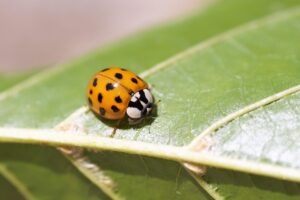
-
Hollow stems like bamboo, elderberry, or sunflower stalks.
-
Logs and branches with drilled holes.
-
Dry leaves for hiding spots.
-
Pinecones for ladybugs and spiders.
-
Straw or hay for shelter.
-
Bricks with holes for a sturdy structure.
-
Clay or mud for solitary bees.
Mixing materials will attract different species. Think of it as creating a tiny apartment complex for bugs.
Step-by-Step Guide: Building Your Bug Hotel
Step 1: Start with a Simple Plan
Grab a pencil and sketch out a basic idea. Want something small for a tabletop or a larger, freestanding version for your garden? Keep in mind that taller designs help keep bugs dry by staying off damp ground.
Step 2: Build the Frame
Get creative with what you have! An old wooden crate, a pallet, or even a leftover drawer can work perfectly. Just be sure the wood is untreated—chemicals in treated wood can be harmful to insects. And make sure your frame is solid and stable.
Step 3: Make Little Compartments
Inside the frame, add dividers using sticks, scrap wood, or small planks to create “rooms.” These little sections give you space to add different natural materials for various insect guests.
Step 4: Fill It with Nature
Now comes the fun part—filling it in! Use bamboo canes, twigs, pinecones, dry leaves, bark, or straw. Pack them in snugly, but leave enough space for bugs to crawl in and make themselves at home.
Step 5: Keep It Secure
To prevent everything from spilling out—or being tampered with by curious animals—cover the front with wire mesh. This helps hold the materials in place while still allowing bugs to come and go.
Step 6: Place Your Hotel
Pick a good spot in your yard or garden. A sunny, sheltered location is best. If possible, tilt the roof slightly so rainwater doesn’t pool—it’ll last longer and stay dry inside.
Step 7: Let Nature Move In
That’s it! Once your bug hotel is set up, it’s time to sit back and wait. Insects may start arriving in just a few weeks, especially during the warmer months.
Make It Look Great, Too!
Bug hotels don’t just help nature—they can also add charm to your garden. Here are a few fun ideas to personalize yours:

-
Paint the outside using non-toxic paint
-
Add a cute little “Bug Hotel” sign
-
Surround it with flowers or native plants
-
Use bark or shingles to make a charming sloped roof
Tip: Avoid bright or synthetic paints—they can scare off or harm insects.
Seasonal Bug Hotel Care
To keep your hotel in tip-top shape year-round, a little seasonal TLC goes a long way:
-
Winter: Let it be—many bugs will be hibernating.
-
Spring: Check for moldy or soggy materials and swap them out.
-
Summer: Keep nearby plants blooming for food and shelter.
-
Fall: Remove any old or empty materials and refresh the space with dry leaves or straw.
Don’t overdo the cleaning. The idea is to create a long-term home, not a temporary shelter.
Plants That Attract Helpful Guests
Want to draw more pollinators and helpful bugs? Plant these around your bug hotel:

-
Lavender
-
Coneflowers
-
Sunflowers
-
Marigolds
-
Bee balm
-
Local wildflowers
They offer food for pollinators and make your garden look stunning.
Avoid These Common Mistakes
To make sure your bug hotel is a hit, steer clear of these easy-to-make errors:

-
Setting it in a damp, shady spot
-
Using chemically treated or synthetic materials
-
Packing it too tightly for insects to move
-
Skipping yearly maintenance
Why Bug Hotels Are Worth It
Bug hotels do more than just attract pollinators. They encourage natural pest control, reduce the need for chemical sprays, and support a thriving garden ecosystem. Plus, they’re fun to build—especially with kids!
Watching bugs move in and learning about them together is a great way to connect with nature right in your backyard.
10 FAQs About DIY Bug Hotels for Pollinators
1. What insects will use my bug hotel?
Bees, ladybugs, lacewings, butterflies, beetles, and even some spiders may move in. Each species looks for different materials.
2. How big should my bug hotel be?
It can be as small as a shoebox or as big as a small shed. Bigger hotels attract more species.
3. What time is best to build a bug hotel?
Early spring is ideal. Pollinators are looking for shelter and nesting spots as the weather warms.
4. How long will it take for insects to use it?
It depends on your location and plant diversity. Some may move in within weeks, while others take months.
5. Do bug hotels attract pests?
Not usually. They’re designed for beneficial insects. However, avoid placing them near your home to reduce any chance of unwanted guests.
6. Can I use plastic materials?
No. Plastic traps moisture and can harm insects. Stick to natural, breathable materials.
7. Should I put food inside?
No need. Insects will find food from nearby plants. Focus on providing shelter.
8. How do I clean a bug hotel?
Once a year, check for mold or broken materials. Replace them carefully without disturbing hibernating insects.
9. Can I build one without tools?
Yes. You can fill a large plant pot or basket with natural materials and place it in a sheltered spot.
10. Do bug hotels really help pollinators?
Yes. They provide nesting spaces, increase biodiversity, and support declining insect populations.
Conclusion
A DIY bug hotel for pollinators is a simple, rewarding project with lasting benefits. You’re not just giving insects a home—you’re helping your garden, your local ecosystem, and the planet.
With just a few materials, a sunny spot, and a little creativity, you can turn your backyard into a buzzing hub of activity. Every bamboo tube, pinecone, and hollow stem becomes a safe haven for nature’s tiny workers.
So, grab your tools—or even just a pile of sticks—and start building. Soon, your garden will be alive with pollinators, helping flowers bloom and fruits grow. And you’ll know you made it possible.

